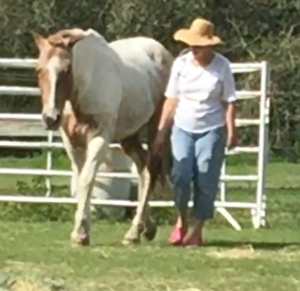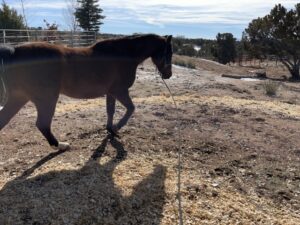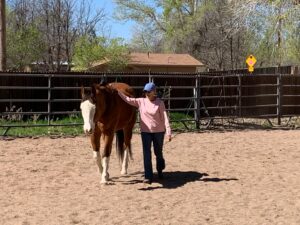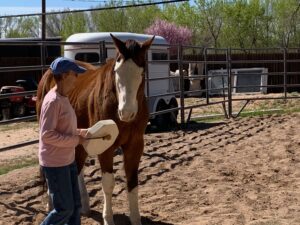 Over the winter, I feel challenged to provide quality time with my horses. I want to make sure they don’t get bored and prone to injury. I also want to maintain my connection with them.
Over the winter, I feel challenged to provide quality time with my horses. I want to make sure they don’t get bored and prone to injury. I also want to maintain my connection with them.
Recently the question arose about how to provide “behavioral enrichment” for a mare who was recovering from recent illness. The ideas presented here are good for that situation as well as for navigating the uncertainty of winter weather and footing. Horses don’t know how long we spend with them, they only remember the time spent and can think on it when we’re not there. If you notice, if you spend time with them for half an hour, the next day they are generally more interested in you and what you might have to offer.
What you can offer will depend on where you live, your energy levels and what you have to deal with weather-wise in your location.
 The person who asked about behavioral enrichment realized she had to get very creative. Yes! Exactly right! There are liberty exercises that can be done in muddy footing, which she and her mare had remembered from classes they took with me.
The person who asked about behavioral enrichment realized she had to get very creative. Yes! Exactly right! There are liberty exercises that can be done in muddy footing, which she and her mare had remembered from classes they took with me.
In this case, I also suggest bodywork as maintenance recovering from any injury or illness.
At our place, we put down shavings to create a small space to do groundwork and ride, and have horses who are not so fresh after all the bad weather. The footing is good for walking and trotting a small circle, in-hand work, or  lateral work along the fence on good days. If there is any pattern at all during winter, it is snow plus cold, then sun and mud then a couple of days of dry ground so you can work.
lateral work along the fence on good days. If there is any pattern at all during winter, it is snow plus cold, then sun and mud then a couple of days of dry ground so you can work.
 A gelding I worked with years ago was going through a patch of being unridden and the owner was wondering what to do with him because he had become dull and uninterested in activity. We worked with playing the drum which perked him up. He loved the deep sound of it. This of course, did not work all the time, as he wanted to know, what next? But it piqued his curiosity so that he could go on to other liberty activities and groundwork, connecting more fully with his owner.
A gelding I worked with years ago was going through a patch of being unridden and the owner was wondering what to do with him because he had become dull and uninterested in activity. We worked with playing the drum which perked him up. He loved the deep sound of it. This of course, did not work all the time, as he wanted to know, what next? But it piqued his curiosity so that he could go on to other liberty activities and groundwork, connecting more fully with his owner.
On a deeper level, making a sensory connection with horses is something we can do while standing in mud up to our eyeballs. We can sit on a feed trough and consider the horse’s world – the sights, smells and sounds of the barn, the chatter of ravens, the feel and smell of the cold air that may prickle against our faces. Horses are sensory beings, so this type of connection is truly valued by them as they live with this world 24/7. It may contrast to our constant doing, but it puts us in alignment with horses. It brings us into ourselves and who we truly are.
I have always been a “lick and a promise” type groomer, but recently I have noticed how much my horses enjoy being groomed. And I enjoy talking to them while grooming, and seeing the mud come off, even for a short time!

 This type of engagement carries over, increases our mutual enjoyment of one another, so that when we actual do “work” again, there is more curiosity, engagement, a feeling of anticipation of what is to come.
This type of engagement carries over, increases our mutual enjoyment of one another, so that when we actual do “work” again, there is more curiosity, engagement, a feeling of anticipation of what is to come.


